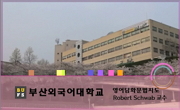한자어에서 대부분의 시각동사는 “목(目)”자에서 나왔다고 할 수 있는데, 이것은 눈으로 사물을 보는 것을 뜻한다. “목(目)”에서 기원한 시각동사에는 간(看), 견(見), 망(望), 시(視), 관(...
http://chineseinput.net/에서 pinyin(병음)방식으로 중국어를 변환할 수 있습니다.
변환된 중국어를 복사하여 사용하시면 됩니다.
- 中文 을 입력하시려면 zhongwen을 입력하시고 space를누르시면됩니다.
- 北京 을 입력하시려면 beijing을 입력하시고 space를 누르시면 됩니다.

한중 한자어 사용에 대한 통시적 연구 -시각동사를 중심으로- = A Diachronic Study on Chinese character and its usage in both Korea and China -Focused on visual verbs-
한글로보기https://www.riss.kr/link?id=A101721178
- 저자
- 발행기관
- 학술지명
- 권호사항
-
발행연도
2015
-
작성언어
Korean
- 주제어
-
KDC
810.5
-
등재정보
KCI등재
-
자료형태
학술저널
- 발행기관 URL
-
수록면
301-326(26쪽)
- DOI식별코드
- 제공처
-
0
상세조회 -
0
다운로드
부가정보
국문 초록 (Abstract)
한자어에서 대부분의 시각동사는 “목(目)”자에서 나왔다고 할 수 있는데, 이것은 눈으로 사물을 보는 것을 뜻한다. “목(目)”에서 기원한 시각동사에는 간(看), 견(見), 망(望), 시(視), 관(觀) 등이 있다. 본문에서는 한중 양국의 문헌에 나타난 시각동사 간(看), 견(見), 망(望), 시(視), 관(觀)의 사용현황을 통시적 관점에서 연구해 보았다. 상고시대부터 근대시대까지 양국 문헌 속에 나타난 시각동사의 사용현황을 살펴본 결과, 각 시대마다 시각동사의 사용에 변화가 있었음이 드러났다. 또한 위의 시각동사를 사용함에 있어서 보편성과 특수성이 존재한다는 것을 알 수있었다. 예를 들어, 양국의 시각동사가 가지는 기본 의미가 비슷했으며, 언어구조가 단음절에서 쌍음절로 변한다는 공통점을 가지고 있었다. 하지만 시각동사의 사용빈도 및 문법형태에서는 양국이 큰 차이를 가지고 있었다. 예를 들어, 중국어에서는 간(看)의 사용이 점차 늘어나는 추세를 보였지만 한국 문헌에서는 그렇지 않았다. 또한 중국어에서는 당송 시기에 나타난 새로운 문법형태가 자리를 잡으면서 현대중국어 문법으로까지 이어진 반면에, 한국 문헌에서는 당송시대에 나타난 문법형태가 거의 발견되지 않았다. 최근 한중 양국은 굉장히 긴밀한 교류를 나누고 있다. 한자교육이 다시 주목을 받고 있는 지금, 한자교육에 있어서 실용성과 활용성이 더욱 강조되어야 할 때이다. 본 대조 연구가 한국에서의 한자교육 및 한자학습에 보다 긍정적이고 효율적인 영향을 가져오기를 기대해 본다.
다국어 초록 (Multilingual Abstract)
Most Chinese and Korean visual verbs originated from one specific character “目”, which refer to eyes. These visual verbs include:“看”、“見”、 “望”、“視”、“觀”. This paper does a diachronic study on the most frequentl...
Most Chinese and Korean visual verbs originated from one specific character “目”, which refer to eyes. These visual verbs include:“看”、“見”、 “望”、“視”、“觀”. This paper does a diachronic study on the most frequently used visual verbs such as “看”、“見”、“望”、“ 視”、“觀” together with their usage in Chinese and Korean literature. At the end of this study it concludes that most of these visual verbs have experienced dramatic changes through time in the aspects of their meaning and also how they are to be used. On the other hand, despite the fact that these visual verbs have lots of common meanings and usages in China and Korea, sometimes they have their different meanings and usages in the two countries. Although the developments of the semantic and word structures of these visual verbs are quite similar in the two countries, there are a great deal of differences among their usage frequency and grammar structure. An obvious example is that word “看”has evolved greatly and become the most frequently used visual verb in Chinese whereas it has not evolved at all and still is the least used visual verb in Korean. In addiction although there have been increasing usages of new grammatical structure in the Chinese literature since the Tang and Song Dynasty, there have been little change on this aspect in Korean literature. In recent years the culture exchange between China and Korea has grown very quickly and it is to go without saying that the present day is a very important new era for the Chinese Character education in both countries, especially its practical application in all aspects of the contemporary society. I hope this paper will provide useful contribution to the current Chinese Character education.
동일학술지(권/호) 다른 논문
-
- 한국한문교육학회
- 진재교 ( Jae Kyo Jin )
- 2015
- KCI등재
-
- 한국한문교육학회
- 정효영 ( Hyo Young Jeong )
- 2015
- KCI등재
-
"주제(主題)" 파악하기 교수학습(敎授學習) 방법(方法) 시론(試論)
- 한국한문교육학회
- 김왕규 ( Wang Kyu Kim )
- 2015
- KCI등재
-
- 한국한문교육학회
- 오예승 ( Ye Seung Oh )
- 2015
- KCI등재





 KCI
KCI KISS
KISS


